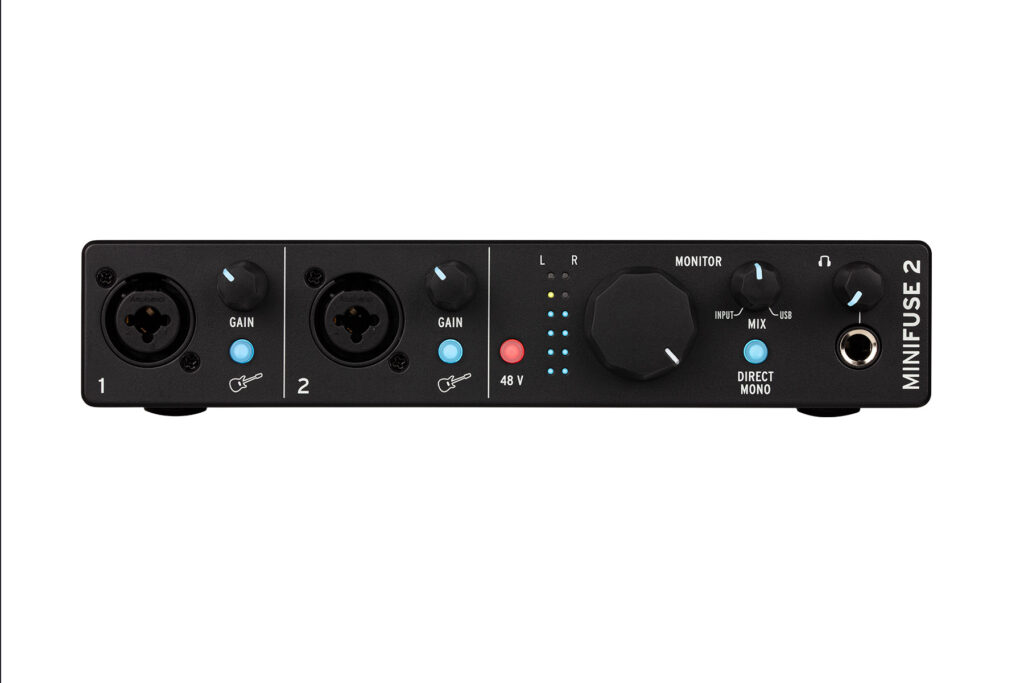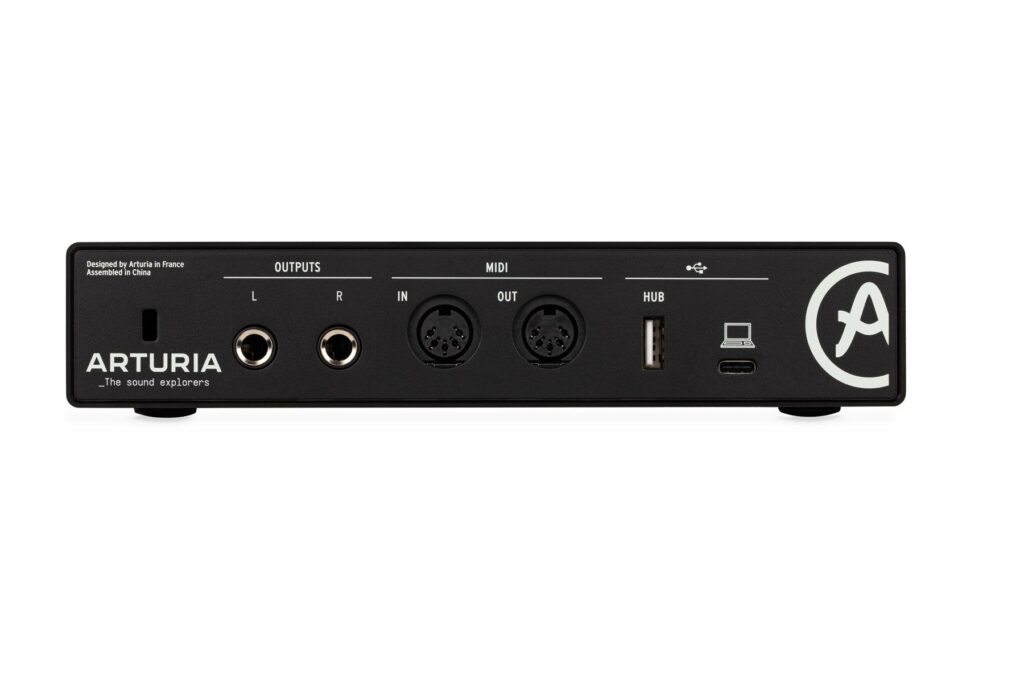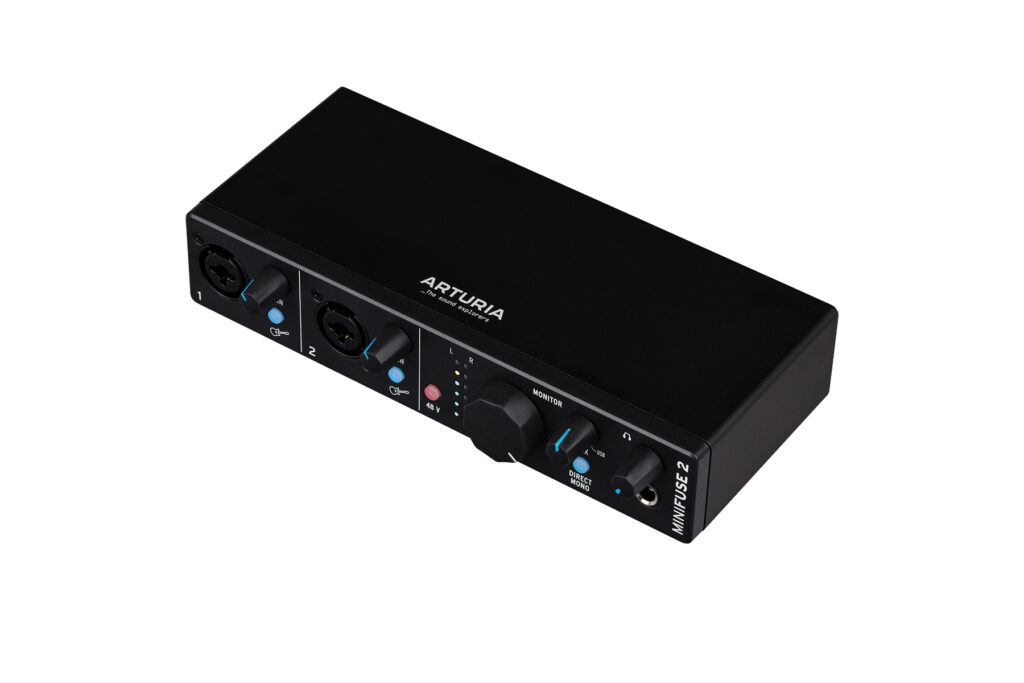Arturia’s new audio interfaces aim to offer affordable options for beginners. Greg Scarth finds out if the MiniFuse 2 can live up to the impressive reputation of the brand’s premium AudioFuse range.

Arturia’s evolution over the last couple of decades has been a joy to watch. From roots in developing software synth plugins which emulated vintage analogue classics, this French brand has branched out into everything from giant hardware synths to MIDI controllers, drum machines to audio interfaces. It’s rare that a brand caters to beginners as well as the hardcore pros with money to burn, but Arturia seem happy to straddle both worlds, offering affordable synths like the brilliant MicroFreak alongside premium options like the MatrixBrute and PolyBrute. The major benefit of that approach is that you get some of the technology and expertise trickling down to the more affordable models. That’s exactly what we have here, with the MiniFuse range of audio interfaces, which slot in below the more expensive AudioFuse series. Our pick of the two launch models is the Arturia MiniFuse 2, which is also available in white.
We’re big fans of the AudioFuse interfaces, which start at around £550. They’re expertly engineered and sound great, but the price point understandably means they’re out of the reach of most newcomers to music production. The big question is whether the challenges of developing a more affordable series means Arturia have cut corners and lost what makes the AudioFuse range so good. Spoiler alert, the short answer is that isn’t the case; the MiniFuse interfaces aren’t quite as high-end or premium as the AudioFuses but some time spent putting them through their paces proves they’re excellent options for beginners. The MiniFuse 2 is the larger of two models launched together to kick off the series. The smaller MiniFuse 1 offers just one input and no built-in MIDI interface, but the MiniFuse 2 is the classic, tried-and-tested setup of 2-in/2-out audio design with MIDI in and out. That’s enough to allow you to record two mono sources simultaneously (or one stereo source), and output the signal via stereo line outs to a suitable pair of studio monitors.

With the MiniFuse hooked up via USB to your computer or mobile device, the interface is nice and simple to get started with. Both inputs are on the front panel, and are identical, with a combo socket allowing you to connect any sound source – synths, guitars, microphones, etc – and an instrument-level switch (marked with a guitar symbol) allowing you to select the suitable setting before adjusting input gain with dedicated knobs. Controlling MIDI instruments such as synths, samplers or drum machines is handled round the back of the unit, with standard 5-pin DIN sockets for MIDI in and out. This is also where you’ll find the main stereo line outputs and a socket for the built-in USB hub, which is a handy addition for hooking up controllers and the like.

The monitoring section of the MiniFuse is on the right-hand side of the front panel, with a simple array of LEDs to monitor levels, a large master volume control. A mix control allows you to blend between the audio inputs and playback from your computer or device, while a handy direct mono switch allows you to monitor both inputs as mono signals rather than one left channel and one right. The headphone output sits alongside, with its own dedicated volume control. In terms of sound quality, the MiniFuse isn’t quite as fancy as the premium AudioFuse range, but there are no complaints in terms of recording quality or playback clarity. Budget audio interfaces are still expected to sound clear and free of distortion, noise or other unpleasant artefacts and the MiniFuse doesn’t disappoint in this respect. Whether you’re getting into electronic production or recording live instruments, it’s impressive.
The formula for the MiniFuse doesn’t really throw up any big surprises in terms of features or functionality, but that’s not what you’re really looking for with an audio interface. Instead, the MiniFuse covers all the basics very well, with no issues in terms of sound quality, stability or compatibility. It’s quick and easy to set up, easy to use and hits the mark in terms of sound and features. Peace of mind also comes from the fact that it comes with an impressive five-year warranty, meaning you’re covered for a long time in the very unlikely event something should go wrong.

Arturia have done the business again with the MiniFuse interfaces. They’re affordably priced, sound great for the money and keep things nice and simple in terms of features. The MiniFuse 2 is our pick of the two launch products; if you can afford the little extra it costs (around £18 at the time of writing), the added versatility of dual inputs and MIDI connectivity makes it a better option for the long term, allowing you to connect more instruments as and when your production process develops and your studio setup evolves. The forthcoming MiniFuse 4 is set to be a bigger step up in price, but assuming it matches the quality of the 1 and 2 it promises to be a solid option for those who need the additional inputs. As it stands, we have no hesitation in recommending the MiniFuse 2, a superb little interface which offers a very appealing alternative to bestsellers like the PreSonus AudioBox and Audient iD4.
Greg Scarth
More info/buy